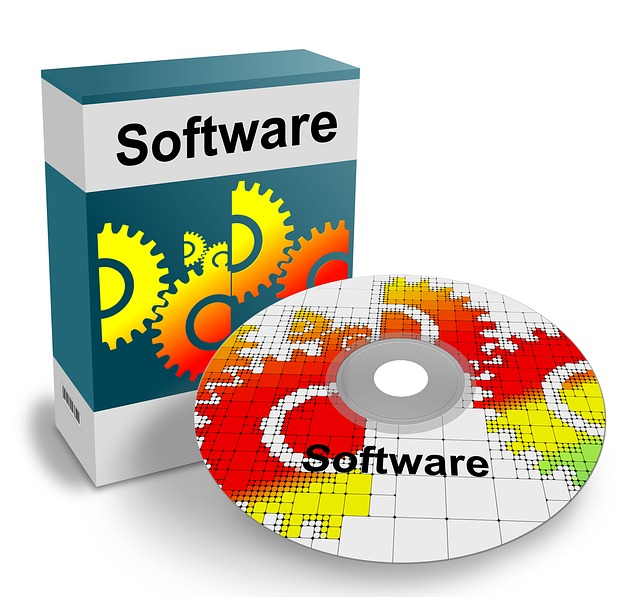Web Application Development: Beginner's Guide
Are you looking to break into the world of web application development but don't know where to start? Whether you're a tech-savvy newcomer or simply interested in broadening your skillset, this beginner's guide is here to help. From understanding the fundamentals of web development languages such as HTML and CSS, to mastering popular frameworks like React and Angular, we've got you covered. Join us on this exciting journey as we explore all things web application development!What is web application development?
Application of web development is the process of creating a web application. A web application is an application that can be accessed over the internet. It can be accessed from any computer or device with an internet connection. Web applications are often used to provide a service or information to users. They can be used to book tickets, track orders, or even provide a gaming experience. . Web software and apps can be developed for businesses, organizations, or individuals. There are many different programming languages and frameworks that can be used to develop a web application. Some popular choices include PHP, Ruby on Rails, and ASP.NET. In order to create a web application, you will need to have some basic knowledge of HTML, CSS, and JavaScript.The different types of web applications
There are a few different types of web applications that you can develop, each with their own benefits and drawbacks. Here is a quick overview of the most popular types of progressive web apps:Static Web Applications
Static web applications are the simplest type of web application to develop. They are essentially just HTML pages that are served up by a web server. There is no dynamic content or user interaction, so static web apps are very fast and easy to deploy. However, they are also very limited in terms of functionality.Dynamic Web Applications
Dynamic web apps are more complex than static web apps, but they offer much more in terms of functionality. With dynamic web apps, the server generates HTML pages on-the-fly based on user input or other data. This makes them much more flexible and powerful than static web apps, but also more difficult to develop and deploy.Single-Page Applications
Single-page applications (SPAs) are a type of dynamic web app that only loads a single HTML page when the user first visits the app. All subsequent interactions with the app happen within that same page, making for a very fast and responsive user experience. However, SPAs can be difficult to develop and debug due to their complex client-side codebases.
Pros and cons of web application development
When it comes to web app development, there are both pros and cons that must be considered. On the plus side, developing a web appcan be a great way to reach a global audience with your product or service. Additionally, web apps tend to be more cost-effective and require less maintenance than traditional desktop applications. However, there are also some potential drawbacks to keep in mind. For example, web apps may not always offer the same level of functionality. Additionally, web applications can be more vulnerable to security threats than their desktop counterparts. Ultimately, whether or not developing a web application is the right decision for you will depend on your specific needs and goals. If you're looking for a cost-effective way to reach a global audience, then a web app may be the way to go. However, if you need an extremely robust and high-performing application, you may want to stick with a desktop application.The different stages of web application development
The different stages of web app development include:Planning and requirements gathering:
This is the first stage of web application development, where you need to gather all the requirements for the project. This includes understanding the client's needs support business processes, goals and objectives.Design:
In this stage, you will start designing the user interface and architecture of the web application. This will include creating wireframes and prototypes for custom web apps.Development:
Once the design to develop web apps is approved, you can start developing the actual code for the web application. This stage will also involve setting up the hosting environment and testing the application.Deployment:
After the web application is developed and tested, it needs to be deployed on a server so that it can go live. This stage will also involve tasks such as setting up security measures and monitoring performance.
What skills are needed for web application development?
In order to be a successful web application developer, there are a few key skills that you will need to possess. Firstly, it is important to have a strong understanding of the different web development frameworks and technologies that are available. Secondly, you will need to be able to code in at least one programming language; PHP, Java and Python are all popular choices. Finally, you should also have experience in using databases such as MySQL or MongoDB, as well as HTML, CSS and JavaScript.How to choose the right web application development platform
When it comes to choosing a web application development platform, there are a few things you need to take into account. The first is the language the platform uses. If you're not a fan of coding in PHP, then you might want to look for a platform that uses Python or Ruby. The second thing is the cost. Some platforms are free, while others can be quite expensive. The third thing is the features the platform offers. Some platforms offer more features than others, so you'll need to decide which ones are most important to you. Finally, you'll need to decide if you want a hosted or self-hosted platform. Hosted platforms are usually easier to use, but they can be more expensive. Self-hosted platforms require more work to set up, but they're usually cheaper in the long run.
FAQ
Which language is best for web application?
There is no definitive answer to which language or tech stack is "best" for web application development, as the most suitable choice depends on various factors such as project requirements, available resources, and developer experience. However, here are some popular programming languages often used for web application development:-
PHP:
A widely used server-side scripting language, PHP is often employed for building dynamic web applications. Laravel and Symfony are popular PHP frameworks that facilitate development. -
JavaScript:
Widely used for frontend development, JavaScript has become indispensable for creating dynamic and interactive web applications. With the help of Node.js, it can also be used for backend development. Modern frameworks for JS appear almost daily. -
Python:
Known for its simplicity and readability, Python is a versatile language suitable for various types of web applications. Popular web frameworks like Django and Flask are used to build robust and scalable applications. -
Ruby:
Ruby on Rails is a popular web application framework that offers rapid development, great community support, and numerous libraries and plugins. -
Java:
A powerful, platform-independent language, Java is often used for building large-scale, enterprise-level web apps. Spring and JavaServer Faces (JSF) are common frameworks. -
C#:
A versatile language, C# is often used in conjunction with the .NET framework for building web apps. ASP.NET is a popular framework in this domain.
Ultimately, the "best" language for web application development depends on your specific needs and preferences. If you are comfortable with a particular language, it may be best to leverage your existing skills and select a corresponding web development framework.

What is custom web app development?
Custom native apps or web app development refers to the process of designing, building, and deploying a web application tailored to meet specific requirements, needs, or business goals. Unlike off-the-shelf software solutions, custom web applications are developed from scratch to address unique challenges, solve particular problems, or streamline specific workflows.
Custom web app development typically involves the following steps:
-
Requirement analysis:
Understanding the client's needs, objectives, and expectations for the web application. This may include gathering functional and non-functional requirements and defining the scope of the project. -
Design:
Creating wireframes, mockups, and prototypes to establish the application's look and feel, user interface (UI), and user experience (UX). This phase also involves planning the application's architecture, technology stack, and data models. -
Development:
Writing the application code, implementing the chosen technologies, and integrating various features and functionalities based on the design and requirements. This phase often includes both frontend and backend development. -
Testing:
Ensuring the web application meets quality standards by identifying and fixing bugs, errors, or performance issues. This step may involve various types of testing, such as unit, integration, system, and user acceptance testing. -
Deployment:
Launching the web application on a live server and making it accessible to end-users. -
Maintenance and support:
Providing ongoing updates, bug fixes, and improvements to the web application based on user feedback and evolving business needs.
Custom web app development offers several advantages, such as greater flexibility, scalability, and the ability to address specific business needs more effectively. However, it may also require more time, resources, and investment compared to using pre-built web solutions, or web application frameworks.

What companies offer custom web development services?
Numerous companies and agencies offer custom web app development services, ranging from small businesses to large-scale enterprises. These companies typically provide end-to-end services, from consultation and design to development, testing, and deployment. Obviously, we think our company Nomadic Soft is the best. We are a full stack web and mobile app development company. We have experience with enterprise systems, trading platforms, mobile apps, progressive web applications and insurance verification software tools. Other custom web development companies include:- Toptal: A global network of top developers, designers, and consultants, Toptal offers custom web development services, as well as other software development and design services.
- Iflexion: A full-service software development company, Iflexion provides custom web application development services, including web portals, e-commerce solutions, and enterprise web applications.
- Cyber Infrastructure (CIS): Offering custom web application development services, CIS specializes in a wide range of technologies, such as PHP, .NET, Java, and Python, and serves clients across various industries.
- ScienceSoft: A software development and IT consulting company, ScienceSoft offers custom web development services, including web application development, CMS implementation, and e-commerce solutions.
- MentorMate: A global custom software development company, MentorMate provides development services, mobile app development, cloud services, and strategic consulting.
- Intellectsoft: A digital transformation consultancy, Intellectsoft offers custom development services, along with mobile app development, UX/UI design, and IT consulting.
- 10Clouds: A software development and design company, 10Clouds specializes in custom web development services, mobile app development, and product design.
These are just a few examples, and there are many other companies and independent developers offering custom web development services. When selecting a web application development company, it's essential to consider factors such as portfolio, client testimonials, industry experience, and the company's ability to meet your project's specific requirements, timeline, and budget.

How much does Webapp development cost?
The cost of web app development can vary greatly depending on factors such as complexity, features, technology stack, development team size, and geographic location of the web application development companies or team. Here's a general outline of the factors that can affect web app development costs:- Complexity: The more complex the web application, the higher the development cost. Complexity factors may include the number of features, integrations with external services, advanced security requirements, or complex business logic.
- Features and functionality: The number and type of features you need in your web app will impact the cost. Custom features or unique functionality typically require more development time and effort, increasing the overall cost.
- Technology stack: The choice of technologies, tools, and frameworks used for the development can influence the cost. Some technologies may require specialized expertise, which may be more expensive.
- Design and user experience: A sophisticated UI/UX design with custom elements, animations, or interactions will typically require more design work, increasing the project cost.
- Development team size and expertise: Depending on the scope and complexity of the project, you may need a larger development team with varied expertise. A team with more experienced developers or experts in specific areas may also charge higher rates.
- Geographic location: Development costs can vary significantly based on the location of the development team. Developers in regions with higher living costs, such as North America or Western Europe, typically charge higher rates than those in regions like Eastern Europe, Asia, or Latin America.

How much does it cost to hire an app developer?
The cost of hiring an app developer depends on various factors, such as their experience, skillset, geographic location, and the complexity of the web development project. Rates for app developers can vary significantly based on these factors. Here's a general breakdown of app developer costs:- Experience and skillset: More experienced app developers or those with specialized skills tend to charge higher rates. Junior developers typically charge lower rates, but they may require more time and guidance to complete tasks.
- Geographic location: Developers in regions with higher living costs, such as North America or Western Europe, generally charge higher rates than those in regions like Eastern Europe, Asia, or Latin America.
- Freelancers vs. agencies: Freelance developers often have lower overhead costs and may charge lower rates compared to agencies. However, agencies may provide additional services such as project management, quality assurance, and ongoing support.
- Type of engagement: App developers can be hired on an hourly basis, as part of a fixed-cost project, or on a retainer. Hourly rates can range from $20 to $150 or more, depending on the factors mentioned above. Fixed-cost projects typically have a predetermined scope and cost, which may be more suitable for smaller, well-defined projects. Retainers involve hiring a developer for a set number of hours per month, which may be more suitable for ongoing projects or maintenance.
With these factors in mind, app developer costs can vary widely. For example, hiring a junior developer from a low-cost region might cost you around $20 to $40 per hour, while an experienced developer from a high-cost region might charge $100 to $150 per hour or more.
To get an accurate estimate of app developer costs for your specific project, it's best to discuss your requirements with potential developers or agencies and request quotes. This will give you a clearer understanding of the costs involved in hiring an app developer that meets your needs.

What is a web application business?
A web application business is a company that builds, maintains, and markets web applications or offers related services, with the goal of generating revenue and creating value for its customers. Web apps are interactive, browser-based software programs that can be accessed over the internet, and they serve various purposes, such as facilitating communication, collaboration, retail and ecommerce organizations i-commerce, or content management. A web application business can be involved in one or more of the following activities:- Developing web apps: Creating custom world class web apps to address specific needs, solve problems, or streamline workflows for clients across various industries. These applications can be tailored to meet unique requirements and may include features such as user authentication, data management, automated testing, analytics, or integrations with other software.
- Offering web application services: Providing services related to web apps, such as consulting, design, development, testing, deployment, maintenance, and support. These services can help clients identify and implement the most effective web application solutions for their businesses.
- Selling or licensing web applications: Developing web apps for specific industries, markets, or use cases and then selling or licensing them to customers. This can include creating and marketing Software as a Service (SaaS) products, which allow users to access the application over the internet on a subscription basis.
- Monetizing web apps: Generating revenue from web apps through various monetization strategies, such as advertising, subscription fees, freemium models, or transaction-based models (e.g., e-commerce platforms). E commerce development can be a lucrative industry, but it would require some experience not only with digital tools but some with inventory management, customer relationships, logistics processes etc.
- Offering web application infrastructure: Providing cloud-based infrastructure, hosting, or platform services that enable other businesses to build, deploy, and manage their web apps more effectively.
A web application business can focus on any combination of these activities or specialize in a particular niche or industry, depending on its expertise, resources, and business objectives.

